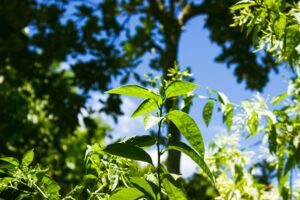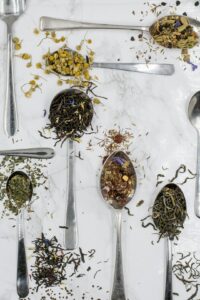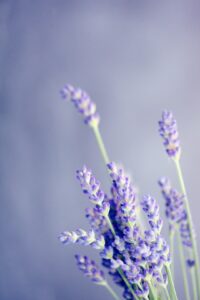Support our educational content for free when you purchase through links on our site. Learn more
What is the Easiest Tea to Grow? [2024]
Did you know that you can grow your own tea at home? Imagine sipping a cup of freshly brewed tea made from leaves you cultivated yourself. It’s not only a rewarding experience but also a great way to connect with nature and enjoy the flavors of your own garden. But if you’re new to tea gardening, you might be wondering: what is the easiest tea to grow? Well, you’re in luck! In this article, we’ll explore the answer to that question and provide you with all the information you need to start your own tea garden. So grab a cup of tea and let’s dive in!
Table of Contents
- Quick Answer
- Quick Tips and Facts
- Background: The Joy of Growing Your Own Tea
- Choosing the Right Tea Plants
- Getting Started: Planting and Growing Tea
- Caring for Your Tea Plants
- Harvesting and Processing Your Tea Leaves
- Brewing Your Homegrown Tea
- FAQ
- Conclusion
- Recommended Links
- Reference Links
Quick Answer
The easiest tea to grow is herbal tea. Unlike true tea, which comes from the Camellia sinensis plant and takes several years to mature, herbal tea can be grown and harvested within a few months. Some popular herbal teas that are easy to grow include chamomile, lavender, peppermint, coriander, lemon bergamot, lemon balm, and jasmine. These herbs not only make delicious teas but also have various medicinal qualities. So if you’re a beginner tea gardener, herbal tea is the perfect choice to start with.
CHECK PRICE on: Herbal Tea Seeds | Chamomile Seeds | Lavender Seeds | Peppermint Seeds
Quick Tips and Facts
Before we dive into the details, here are some quick tips and facts about growing tea:
- Tea can be grown both indoors and outdoors, depending on the climate and the type of tea plant.
- Tea plants prefer well-draining soil and partial shade, although some varieties can tolerate full sun.
- It’s important to choose the right tea plants for your region and climate to ensure successful growth.
- Regular pruning and fertilizing can help promote healthy tea plant growth and increase tea production.
- Different tea plants have different flavor profiles, so it’s worth experimenting with different varieties to find your favorite.
Now that you have a general idea, let’s explore the joy of growing your own tea.
Background: The Joy of Growing Your Own Tea
There’s something magical about growing your own tea. From planting the seeds to harvesting the leaves, every step of the process is filled with anticipation and excitement. Not only do you get to enjoy the flavors of your own garden, but you also have the satisfaction of knowing exactly where your tea comes from and how it was grown.
At Growing Teas™, we believe that cultivating your own tea is a truly rewarding experience. Our team of tea growers has years of experience in growing various tea plants, and we’re here to share our knowledge with you. Whether you’re a seasoned gardener or a beginner, we’ve got you covered. So let’s get started on your tea-growing journey!
Choosing the Right Tea Plants
When it comes to growing tea, choosing the right tea plants is crucial. As mentioned earlier, herbal tea is the easiest to grow, making it an excellent choice for beginners. Here are some popular herbal teas that you can easily grow in your own garden:
- Chamomile: Known for its calming properties, chamomile tea is a favorite among tea enthusiasts. It’s easy to grow and produces beautiful daisy-like flowers that can be harvested for tea.
- Lavender: With its soothing aroma and delicate flavor, lavender tea is a delightful choice. Lavender plants thrive in sunny locations and well-draining soil.
- Peppermint: Refreshing and invigorating, peppermint tea is a classic herbal tea. Peppermint plants are fast-growing and can be harvested multiple times throughout the growing season.
- Coriander: Not just a culinary herb, coriander also makes a delicious tea. The seeds of the coriander plant can be dried and brewed for a flavorful and aromatic tea.
- Lemon Bergamot: Also known as bee balm, lemon bergamot produces vibrant flowers that attract pollinators. The leaves can be used to make a citrusy and refreshing tea.
- Lemon Balm: As the name suggests, lemon balm has a delightful lemony scent and flavor. It’s easy to grow and can be used to make a soothing and calming tea.
- Jasmine: Known for its intoxicating fragrance, jasmine tea is a popular choice. Jasmine plants require a bit more care and attention but are well worth the effort.
These are just a few examples of herbal teas that you can grow in your own garden. Feel free to explore other options and experiment with different flavors. The possibilities are endless!
Getting Started: Planting and Growing Tea
Now that you’ve chosen the tea plants you want to grow, it’s time to get your hands dirty and start planting. Here are some steps to help you get started:
-
Choose the right location: Most tea plants prefer partial shade, although some varieties can tolerate full sun. Make sure to select a location that provides the ideal amount of sunlight for your chosen tea plants.
-
Prepare the soil: Tea plants thrive in well-draining soil. If your soil is heavy or clay-like, consider adding organic matter such as compost or peat moss to improve drainage. You can also grow tea plants in containers filled with a well-balanced potting mix.
-
Plant the tea seeds or seedlings: Follow the instructions on the seed packet or plant label for the specific tea plant you’re growing. Sow the seeds or transplant the seedlings at the appropriate depth and spacing.
-
Water regularly: Tea plants require consistent moisture, especially during the growing season. Water them regularly, keeping the soil evenly moist but not waterlogged.
-
Fertilize as needed: Tea plants benefit from regular fertilization. Use a balanced organic fertilizer or a fertilizer specifically formulated for tea plants. Follow the instructions on the fertilizer package for the correct application rate.
With proper care and attention, your tea plants will start to grow and thrive. But remember, patience is key. Tea plants take time to mature, so don’t expect a bountiful harvest overnight.
Caring for Your Tea Plants
To ensure the health and productivity of your tea plants, it’s important to provide them with the care they need. Here are some tips for caring for your tea plants:
-
Pruning: Regular pruning helps promote healthy growth and increases tea production. Prune your tea plants in early spring to remove any dead or damaged branches and to shape the plants.
-
Fertilizing: Tea plants benefit from regular fertilization. Apply a balanced organic fertilizer or a fertilizer specifically formulated for tea plants according to the package instructions.
-
Pest and disease control: Keep an eye out for common pests and diseases that can affect tea plants, such as aphids, mites, and fungal infections. Use organic pest control methods whenever possible to minimize the use of chemicals.
-
Mulching: Apply a layer of organic mulch around the base of your tea plants to help retain moisture, suppress weeds, and regulate soil temperature.
By providing your tea plants with the care they need, you’ll ensure their health and productivity, leading to a bountiful harvest of tea leaves.
Harvesting and Processing Your Tea Leaves
The moment you’ve been waiting for has arrived: it’s time to harvest your tea leaves and turn them into a delicious cup of tea. Here’s how to do it:
-
Harvesting: Depending on the type of tea plant you’re growing, you’ll harvest either the leaves or the flowers. For herbal teas like chamomile and lavender, harvest the flowers when they are fully open. For peppermint and other mint varieties, harvest the leaves as needed throughout the growing season.
-
Drying: To preserve the flavor and aroma of your tea leaves, it’s important to dry them properly. Spread the harvested leaves or flowers in a single layer on a clean, dry surface. Allow them to air dry in a well-ventilated area away from direct sunlight. Once the leaves are completely dry, store them in airtight containers to maintain freshness.
-
Brewing: When you’re ready to enjoy your homegrown tea, simply steep a teaspoon of dried tea leaves or flowers in hot water for 3-5 minutes. Adjust the steeping time to your preference, and feel free to experiment with different brewing methods and flavor combinations.
With your own homegrown tea leaves, you can create unique blends and enjoy the flavors of your garden in every cup.
Brewing Your Homegrown Tea
Brewing your homegrown tea is a delightful experience that allows you to savor the flavors and aromas of your garden. Here are some tips for brewing the perfect cup of tea:
-
Water temperature: Different teas require different water temperatures for optimal brewing. Herbal teas generally do well with water that has been boiled and allowed to cool for a minute or two. Experiment with different water temperatures to find the perfect balance for your taste.
-
Steeping time: The steeping time for herbal teas can vary depending on the desired strength and flavor. Start with a steeping time of 3-5 minutes and adjust to your preference. Remember, the longer you steep, the stronger the flavor will be.
-
Flavor combinations: Get creative with your tea blends by combining different herbs and flavors. Add a sprig of fresh mint to your chamomile tea or a slice of lemon to your lavender tea. The possibilities are endless!
-
Sweeteners and additives: Herbal teas are naturally flavorful and often don’t require any sweeteners or additives. However, feel free to add a touch of honey, a squeeze of lemon, or a splash of milk if desired.
Brewing your own tea allows you to customize your cup to your liking and experiment with different flavors. So go ahead, get creative, and enjoy the fruits of your labor!
FAQ
What tea is best for plant growth?
When it comes to plant growth, true tea from the Camellia sinensis plant takes several years to mature and requires specific growing conditions. If you’re looking for tea plants that are easy to grow and have a quicker turnaround time, herbal teas are the best choice. Some popular herbal teas that are good for plant growth include chamomile, lavender, peppermint, coriander, lemon bergamot, lemon balm, and jasmine.
Read more about “The Best Herbal Teas for Hair Growth …”
How hard is it to grow your own tea?
Growing your own tea can be a rewarding experience, but it does require some effort and patience. True tea from the Camellia sinensis plant takes several years to mature and requires specific growing conditions. However, herbal teas are much easier to grow and can be harvested within a few months. With the right care and attention, anyone can successfully grow their own tea at home.
Read more about “How hard is it to grow your own tea?”
What herbs are good for growing tea?
There are many herbs that are good for growing tea. Some popular choices include chamomile, lavender, peppermint, coriander, lemon bergamot, lemon balm, and jasmine. These herbs not only make delicious teas but also have various medicinal qualities. Choose herbs that thrive in your climate and provide the ideal growing conditions for successful tea cultivation.
Read more about “What Herbs Are Best to Mix Together for Tea? …”
Can you make tea from any plant?
While you can make tea from many different plants, not all plants are suitable for tea production. True tea comes from the Camellia sinensis plant and includes varieties such as green tea, black tea, white tea, and oolong tea. However, herbal teas can be made from a wide range of plants, including herbs, flowers, and fruits. It’s important to choose plants that are safe for consumption and have desirable flavors and aromas.
Read more about “Do Tea Plants Come Back Every Year? …”
Conclusion
Growing your own tea is a rewarding and enjoyable experience that allows you to connect with nature and savor the flavors of your own garden. While true tea from the Camellia sinensis plant requires time and specific growing conditions, herbal teas offer a quicker and easier option for tea gardening. Chamomile, lavender, peppermint, coriander, lemon bergamot, lemon balm, and jasmine are just a few examples of herbal teas that are easy to grow and make delicious brews.
So why not start your own tea garden today? Choose the tea plants that suit your taste and climate, follow our expert tips for planting and care, and soon you’ll be enjoying a cup of tea made from leaves you cultivated yourself. Happy tea gardening!
Recommended Links
- CHECK PRICE on: Herbal Tea Seeds | Chamomile Seeds | Lavender Seeds | Peppermint Seeds
- Shop Herbal Tea on: Amazon | Walmart | Etsy
- Shop Chamomile Tea on: Amazon | Walmart | Etsy
- Shop Lavender Tea on: Amazon | Walmart | Etsy
- Shop Peppermint Tea on: Amazon | Walmart | Etsy









